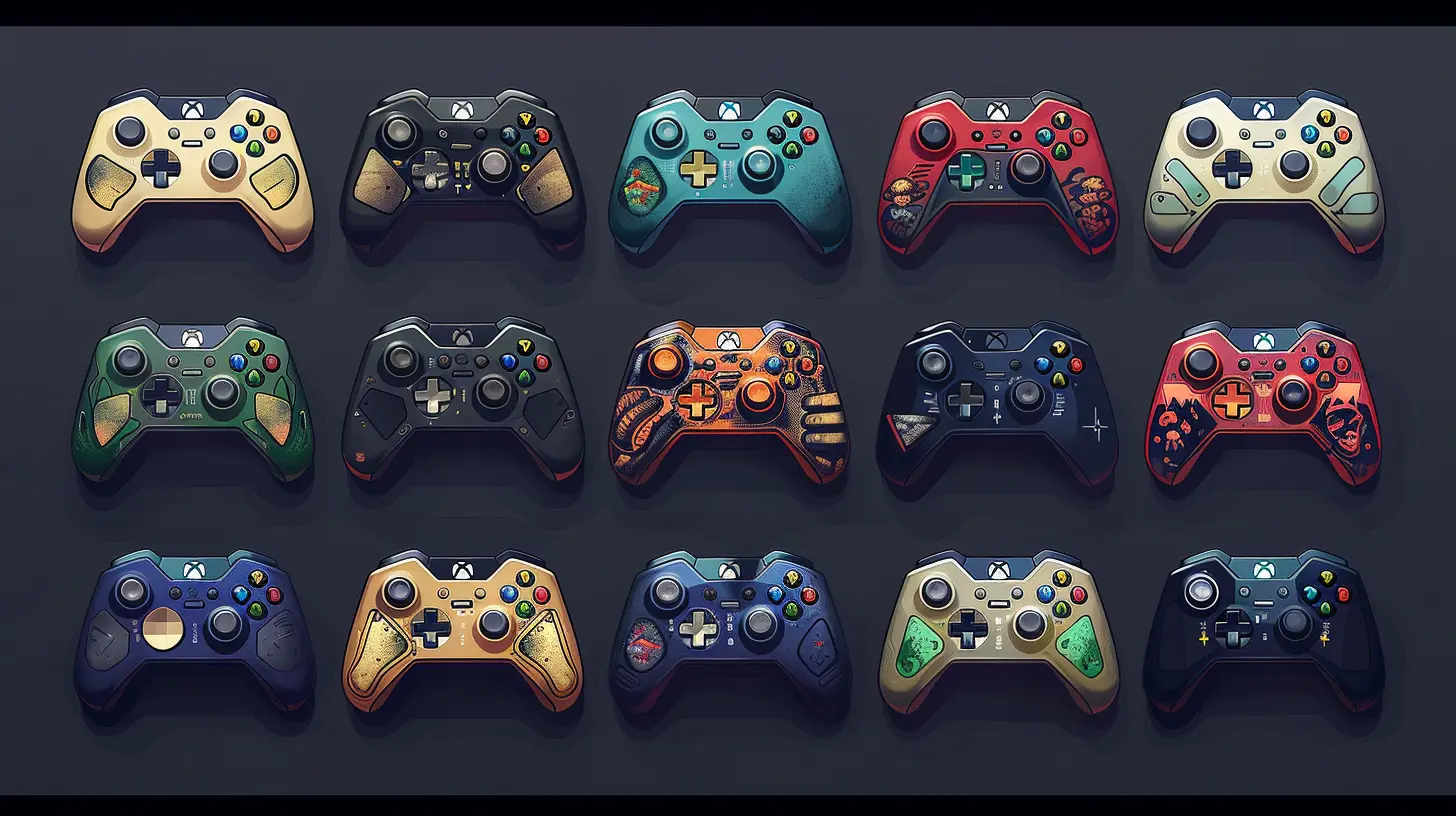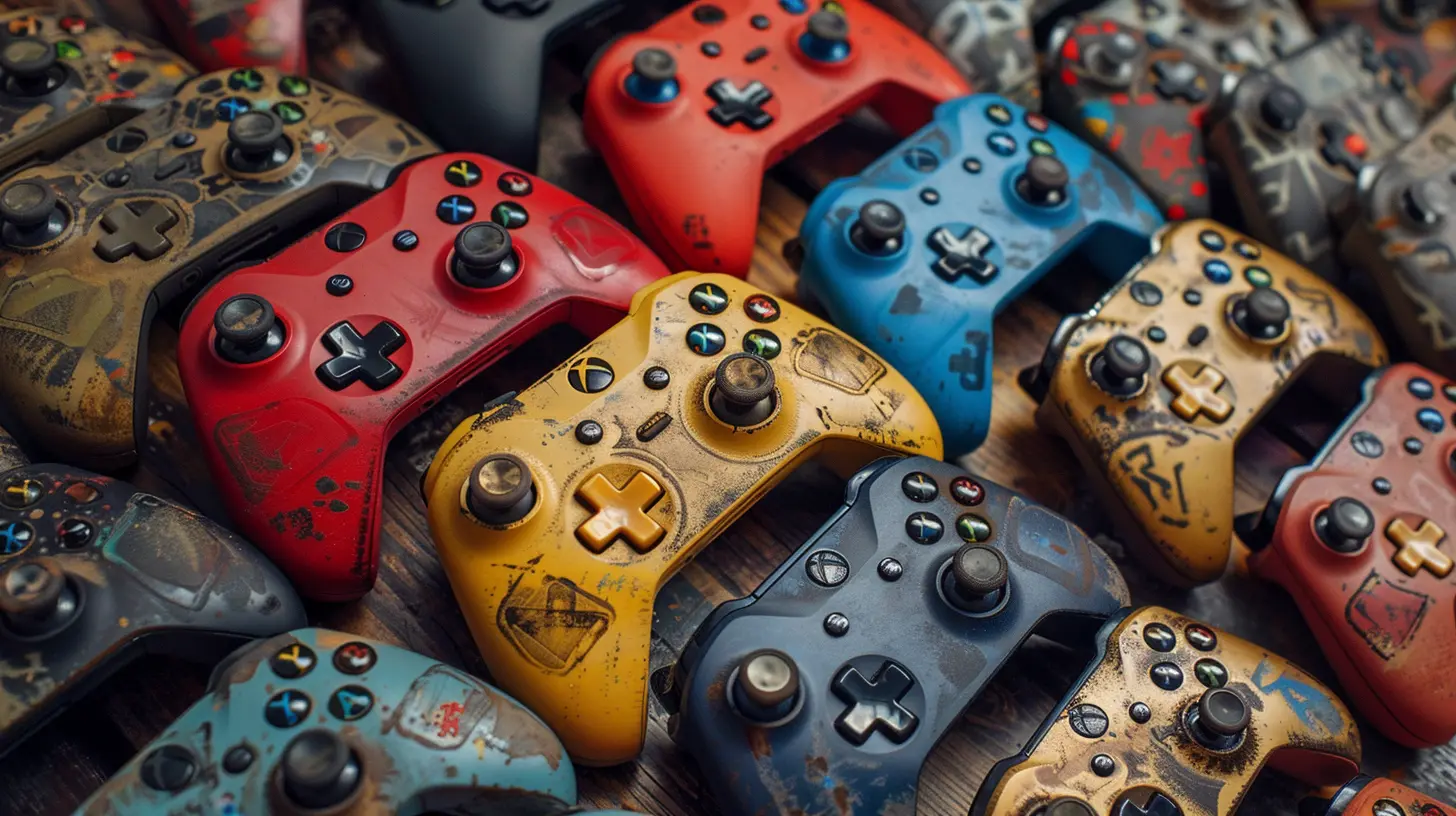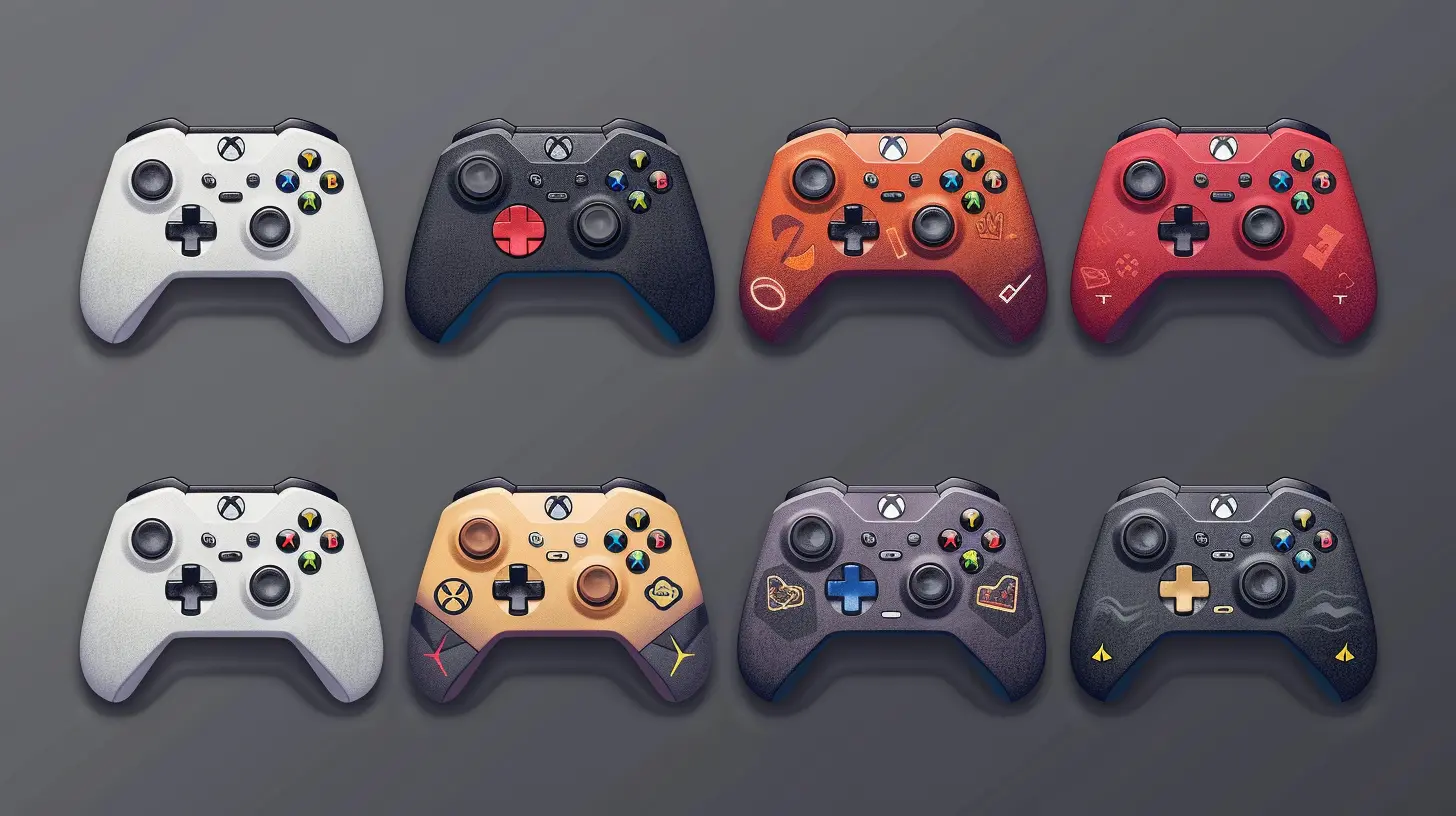9 March 2025
When it comes to gaming, the controller is like your trusty sword in a massive RPG—it's your connection to countless adventures. Over the years, Microsoft has refined, reimagined, and upgraded the Xbox controller, evolving it into one of the most beloved gamepads in the gaming world. Whether you're a seasoned Xbox veteran or just someone curious about the history behind this iconic piece of hardware, buckle up because we're taking a journey through time to explore the evolution of the Xbox controller.

The Beginning: The Duke (2001)
Ah, the year 2001—a time when flip phones were cool, and everyone was still jamming to CDs. This was the year Microsoft entered the console wars with the original Xbox, and along with it came the very first Xbox controller, affectionately (or not-so-affectionately) nicknamed "The Duke."Let me tell you, The Duke was a beast. It was massive, and if you had small hands, it might as well have been a workout. Seriously, using The Duke probably counted as arm day. It had an unusually bulky frame, but within that frame, Microsoft had crammed a lot of innovation.
The layout introduced the now-standard A, B, X, and Y buttons, along with two analog sticks, a D-pad, and triggers. However, the Start and Back buttons were oddly placed, and don’t even get me started on the stiff D-pad—it felt like trying to steer a tank with a butter knife.
That said, The Duke had its charm. For one, it was incredibly durable. You could probably drop it from a two-story building, and it’d still work. Plus, it had that bold Xbox logo in the middle, which gave off some serious “Look at me, I’m new and exciting!” vibes.
Still, it was clear to everyone (even Microsoft) that The Duke wasn’t perfect. And so, the team quickly went back to the drawing board.
The Controller S: A Slimmer, Kinder Beast (2002)
By 2002, Microsoft listened to the cries (and wrist pain) of gamers and released the Controller S. This was a much-needed redesign, and boy, was it an improvement. This controller was smaller, sleeker, and way more ergonomic. If The Duke was the overly bulky SUV, the Controller S was the smooth, compact sedan.The button layout became much more intuitive, with the Start and Back buttons placed where they actually made sense. The D-pad got a slight upgrade, though it still wasn't perfect. Overall, the Controller S became the default Xbox controller in most regions, and for good reason—it felt good to hold, it played better, and it proved Microsoft was listening to its fans.
Looking back, the Controller S was like setting the stage for the Xbox's future. It was the start of Microsoft figuring out what worked (and what didn't) in their controller designs, paving the way for more streamlined innovations.
The Xbox 360 Controller: A Game-Changer (2005)
If the Controller S was Microsoft figuring things out, the Xbox 360 controller was them absolutely nailing it. You could argue this controller was the turning point for Xbox hardware—it was that good.Released alongside the Xbox 360 in 2005, this controller introduced a wireless option, something revolutionary at the time. No more tripping over cords or accidentally yanking your console off the shelf (RIP to everyone who did this). The wireless model ran on AA batteries or a rechargeable battery pack, making it flexible and forward-thinking.
The design? Near-perfect. The asymmetrical stick layout, with the left stick positioned higher than the right, became a trademark for Xbox controllers—it just felt natural. The triggers had a satisfying springiness, the bumpers were easy to press, and the guide button in the center offered quick access to the Xbox dashboard.
Sure, the D-pad still kinda sucked. Let's be real: it was mushy and imprecise, especially for fighting games. But the rest of the controller was such a joy to use that most people forgave this one major flaw.
In fact, the Xbox 360 controller was so beloved that even PC gamers started using it by the droves. It became the go-to gamepad for years, cementing its place in gaming history.
The Xbox One Controller: Refinement Over Revolution (2013)
With the Xbox One, Microsoft didn’t try to reinvent the wheel—they just made it roll a little smoother. The Xbox One controller, released in 2013, felt like a carefully refined version of its predecessor. Why mess with a winning formula, right?The body was slightly smaller and more ergonomic, with textured grips that made long gaming sessions way more comfortable. The triggers got a major upgrade too; they now included "impulse triggers," which provided subtle vibrations during gameplay. Imagine firing a gun in Halo or accelerating in a racing game—the triggers would give you feedback that made the action feel more immersive. Pretty cool, huh?
The D-pad finally got the glow-up it deserved. Instead of the mushy disc that plagued the Xbox 360 controller, the Xbox One D-pad was a proper cross, catering to all those fans of fighting and platforming games.
Another improvement was the micro-USB port, which allowed for charging the controller if you had a Play & Charge kit. No more fumbling with bulky battery packs—it was all about keeping things sleek and user-friendly.
That said, the Xbox One controller wasn’t a massive step forward, but it didn’t need to be. It was reliable, intuitive, and (once again) became a favorite among PC gamers too.
The Xbox Elite Controller: Luxury Gaming (2015)
Alright, now we’re talking about the fancy stuff. In 2015, Microsoft went all-out and introduced the Xbox Elite Controller, a premium-grade gamepad built for serious gamers. If regular controllers are like sneakers, the Elite was a custom-fitted pair of high-end boots.The Elite Controller was all about customization. It came with interchangeable thumbsticks, paddles, and D-pads, so you could tweak the feel and functionality to your heart’s content. Want a taller stick for better aiming precision? Done. Prefer paddles on the back so your fingers never leave the triggers? Easy.
Everything about it screamed luxury, from the metal components to the rubberized grip. Of course, luxury comes at a price, and the Elite Controller wasn’t cheap—but for competitive gamers or anyone wanting that extra edge, it was a no-brainer.
Xbox Series X|S Controller: Subtle Perfection (2020)
Finally, we arrive at the present. Released alongside the Xbox Series X|S in 2020, the latest Xbox controller is all about subtle but meaningful improvements. At first glance, it’s easy to mistake it for an Xbox One controller—they look incredibly similar. But it’s the little things that count.For starters, the new controller introduced textured grips on the triggers and bumpers, giving you better control during intense gaming moments. There’s also a dedicated Share button, making it easier than ever to capture screenshots or record gameplay clips—because let’s be honest, who doesn’t want to brag about their best gaming moments?
The D-pad was redesigned once again, blending the precision of a cross with a circular shape that made it more versatile. It’s perfect for a wide variety of games, from fighting to platformers.
Another big win? The controller now supports USB-C, which means faster charging and a more modern port. Plus, it’s fully backward compatible with Xbox One accessories, so you don’t have to buy a whole new set of gear.
Why the Xbox Controller Hits the Sweet Spot
So, what’s the secret sauce behind the Xbox controller’s evolution? It’s simple: Microsoft listens to its fans. Every iteration of the controller feels like a thoughtful response to feedback, focusing on comfort, functionality, and innovation.While other companies experiment with radical designs (we’re looking at you, Nintendo), Microsoft has stuck with a consistent layout that feels fresh and familiar at the same time. Gamers appreciate that balance—it’s like returning to your favorite pair of jeans. You know exactly what you’re getting, but there’s always something slightly better about the latest version.
Final Thoughts: Where Do We Go From Here?
The Xbox controller has come a long way since the days of The Duke. It’s evolved from a clunky, oversized beast into a sleek, modern gamepad that defines comfort and usability. And with Microsoft constantly pushing the boundaries, who knows what the next iteration will bring? Maybe haptic touchscreens? Or controllers that adjust their shape to fit your hands? Only time will tell.But for now, let’s appreciate the journey so far. From The Duke to the Elite, the Xbox controller has grown alongside the gaming community, shaping the way we play—and that’s something worth celebrating.







Natalie Cummings
This comprehensive breakdown of the Xbox controller's evolution highlights its innovative designs and user-focused enhancements. It's fascinating to see how each iteration has shaped the gaming experience. Kudos for such an insightful analysis!
April 3, 2025 at 4:43 AM